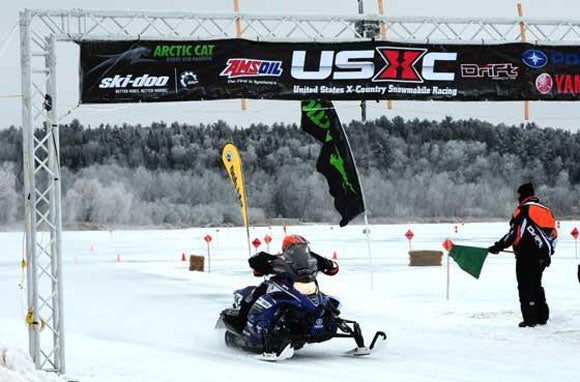Top 10 Tips for Staying Safe on Ice

How to Avoid Danger - and Survive if You Can't
Snowmobiling can be a great winter outdoor activity, enjoyed in either a club environment or just with one or two friends. But it is also one where safety is paramount, and every rider can always learn and share more information about how to stay safe.
Here’s a list of 10 safety tips:
- Use designated ice surfaces Many communities have designated outdoor ice surfaces that are maintained by knowledgeable staff. The ice should be regularly tested to ensure that it is safe for recreational use.
- Measure ice thickness in several locations
No ice with without some risk. Local conditions like currents and water depths affect ice thickness. White ice has air or snow in it and should be avoided.
New, clear, hard ice is the safest.
The lifesaving society offers these guidelines. · 3 inches or less–stay off · 4 inches–ice fishing, walking, cross-country skiing · 5 inches–one snowmobile or ATV · 8-12 inches–one car or small pickup truck · 12-15 inches–one medium truck (pickup or van)
- Avoid traveling on ice at night or when it is snowing Reduced visibility increases your chances of driving onto an open or weak ice area–a frequent cause of ATV and snowmobile-related drownings.
- Never go onto ice alone Before you leave shore, tell someone where you are going and what time you expect to return.
- Stay off ice that has formed over moving water (rivers and the narrows between lakes) Currents and moving water can quickly change ice thickness, making it dangerous.
- Wear a thermal protection buoyant suit If you don’t have a buoyant suit, wear a lifejacket or PFD over your snowmobile suit or layered winter clothing to increase your survival chances.
- Take safety equipment with you Pack ice picks, a rope and a small personal safety kit (pocket knife, compass, whistle, fire starter kit and cell phone) in your pocket.
- Avoid alcohol Alcohol impairs your judgment and coordination and speeds up the onset of hypothermia.
- Don’t drive on ice, but if you can’t avoid it, have an escape plan Open your windows, unlock your doors and turn on your lights to make a quick escape easier. Some experts recommend that you keep your seatbelt unfastened and your door slightly ajar as well. Don’t wear a lifejacket while riding inside an enclosed vehicle; the extra bulk and flotation could hamper your escape through a window.
- Always supervise children on or near ice
Self Rescue 101 And if you do happen to fall in the ice, remember these important tips:
- Stay calm and call for help In the first few minutes make a conscious effort to get your breathing under control and call for help.
- Do not attempt to remove your clothing Air trapped in your clothing will keep you afloat and prevent hypothermia.
- Kick vigorously into a horizontal, floating position Swim back in the direction from which you came. The ice you just traveled over has already proven capable of holding your weight.
- Reach forward onto the broken ice without pushing down Ice picks or some other sharpened object can provide life-saving traction.
- Kick vigorously into a swimming position Bring your feet and legs near the surface. Continue kicking while using your arms to help propel yourself forward and onto the ice like a seal.
- Do not stand up on the ice Using your arms, gently lift your torso to drain some water from your clothing and reduce your weight. Then, push yourself forward onto your stomach or crawl or roll away from the hole to distribute your weight over a greater area. Look ahead to make sure you’re going in right direction and do not stand up until you’ve reached ground or solid ice.
- Seek shelter and protect yourself from hypothermia Once you are out, hypothermia is still a threat. If shelter is reasonably close by (less than 30 minutes away), go; if not, stay where you are.
- If you go, keep moving and find shelter quickly Wring out wet clothing and keep moving to warm up. Do not overexert yourself.
- If you stay, protect yourself from the elements Wrap yourself in some kind of wind break or insulation. If you can, get off the ice and build a fire. Dry yourself off thoroughly and change into dry clothing if possible. If not, remove your clothing, wring it out and put in on again.
Important: At no time should an untrained rescuer venture onto the ice to perform a rescue. If someone has fallen through thin ice, the same thing may happen to a rescuer who tries to approach the hole.
Source: Insurance Bureau of Canada








 Your Privacy Choices
Your Privacy Choices